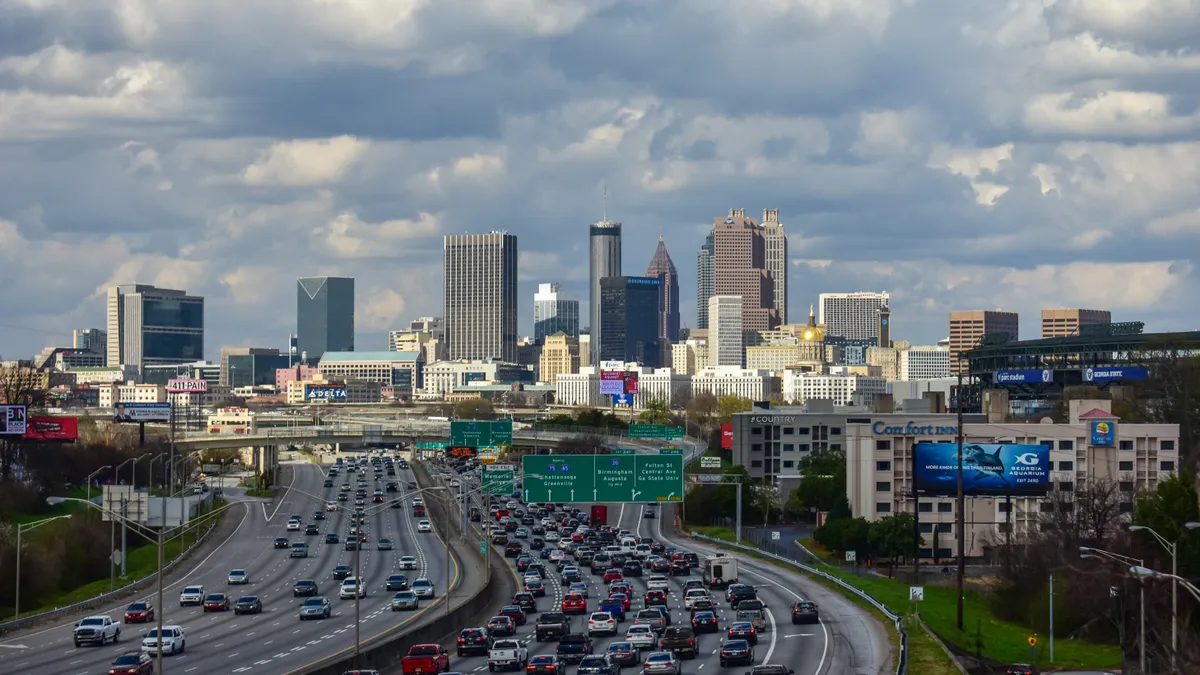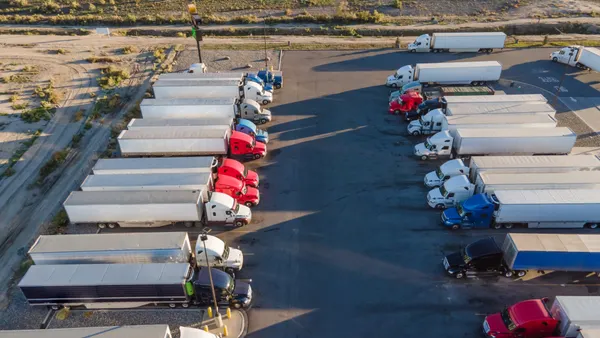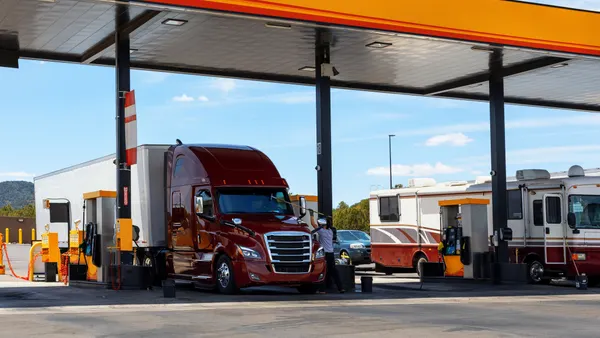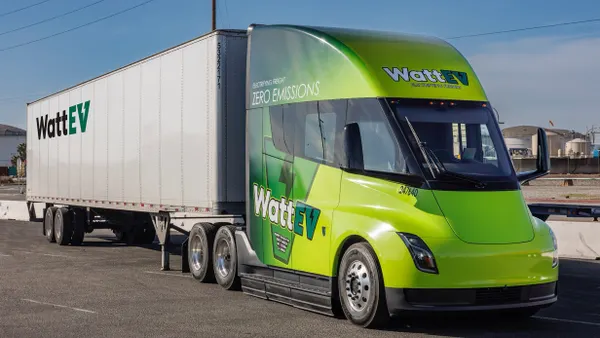Dive Brief:
- The Perimeter in Atlanta, Interstate 285, is home to three of the top 10 worst trucking bottlenecks in the U.S., the American Transportation Research Institute reported in this year’s rankings, released Tuesday.
- Fort Lee, New Jersey, where traffic often backs up at the George Washington Bridge into New York, held onto its crown as the biggest pain point for truckers for the sixth straight year. But Atlanta edged out Chicago and Houston for the most bottlenecks in one major metropolitan area.
- The average rush hour truck speed in the 10 worst areas was 28.5 mph, according to ATRI. Overall average rush hour truck speeds dropped nearly 4% from the previous year to 34.4 mph.
The top 10 biggest truck bottlenecks
| Highway interchange | City and state |
|---|---|
| 1. I-95 and SR 4 | Fort Lee, New Jersey |
| 2. I-294 at I-290/I-88 | Chicago, Illinois |
| 3. I-55 | Chicago, Illinois |
| 4. I-45 at I-69/US 59 | Houston, Texas |
| 5. I-285 at I-85 (North) | Atlanta, Georgia |
| 6. I-20 at I-285 (West) | Atlanta, Georgia |
| 7. SR 60 at SR 57 | Los Angeles, California |
| 8. I-10 at I-45 | Houston, Texas |
| 9. I-285 at SR 400 | Atlanta, Georgia |
| 10. I-24/I-40 at I-440 | Nashville, Tennessee |
Source: ATRI
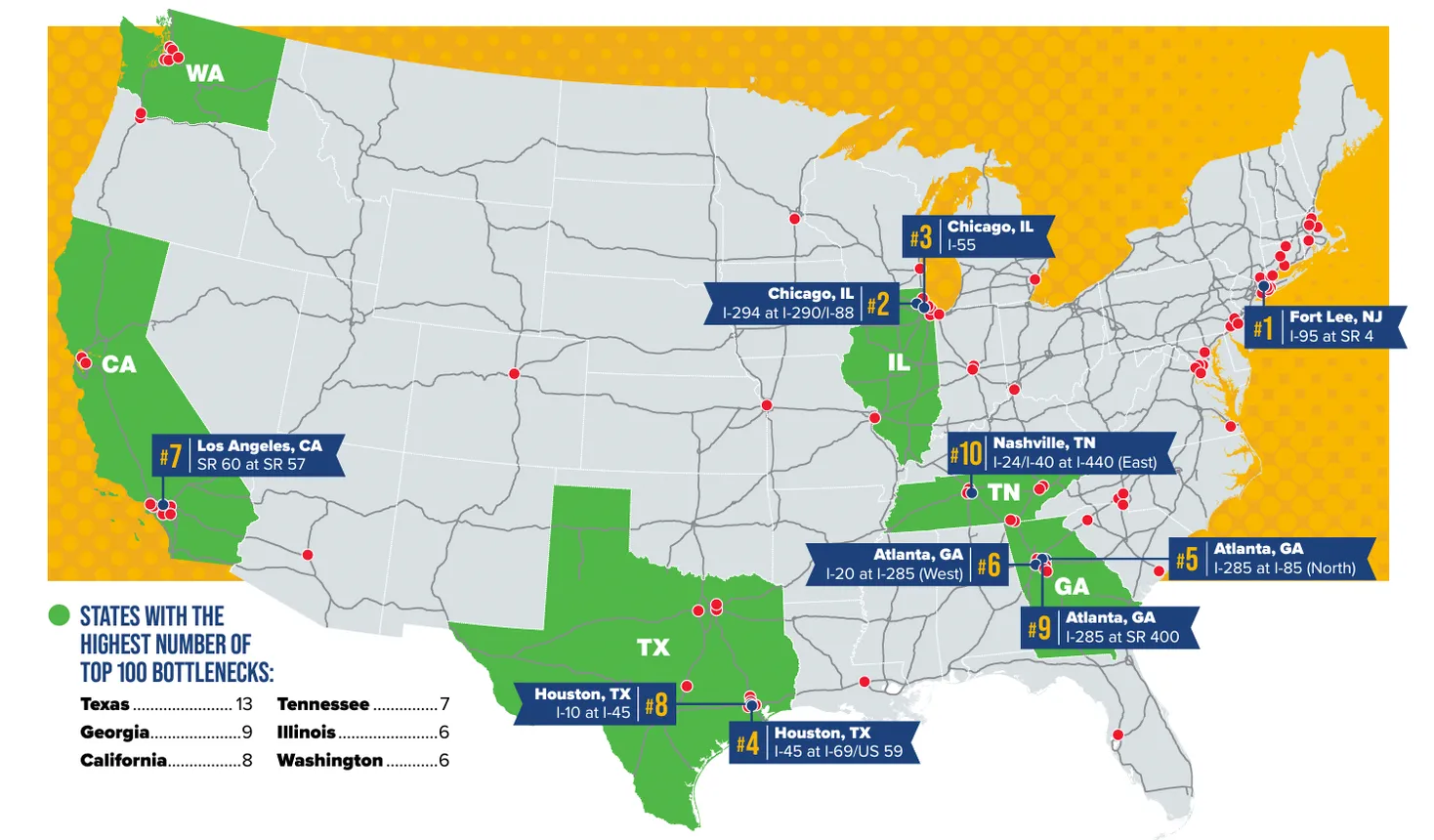
Dive Insight:
Georgia Motor Trucking Association President and CEO Ed Crowell told Trucking Dive in an interview that ongoing construction has caused traffic to crawl on the Perimeter.
“There are cones and cranes everywhere,” Crowell said.
But that’s also a reason for optimism: The Georgia Department of Transportation has crews working to address the issues, Crowell said.
“When it's all said and done, which will be another year and a half or two years, I think we should see better traffic flow and hopefully get further down that top 10 list and maybe, if we're lucky, even get off of it,” the state trucking association president said.
In a statement, American Trucking Associations President and CEO Chris Spear cited the $95 billion ATRI estimates traffic adds to the cost of freight transportation, generating 69 million metric tons of excess carbon emissions each year.
ATRI’s top bottlenecks report provides a blueprint for state and federal transportation officials to follow for investing infrastructure funding most effectively, Spear said.
“Increasing freight efficiency should be a top priority for the U.S. DOT, and alleviating these bottlenecks would improve highway safety, protect the environment and support interstate commerce,” the ATA CEO said.



